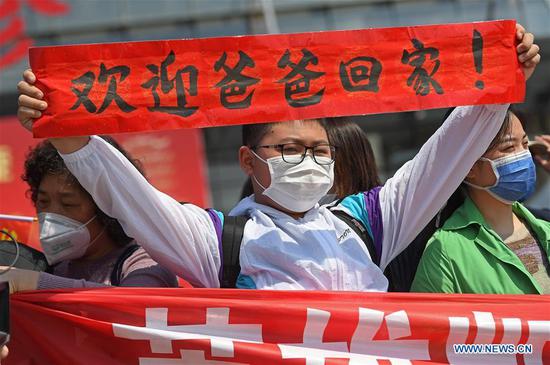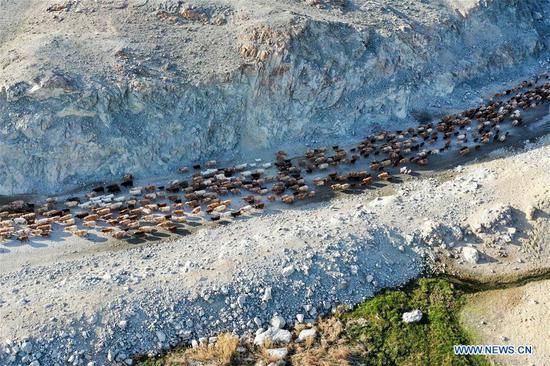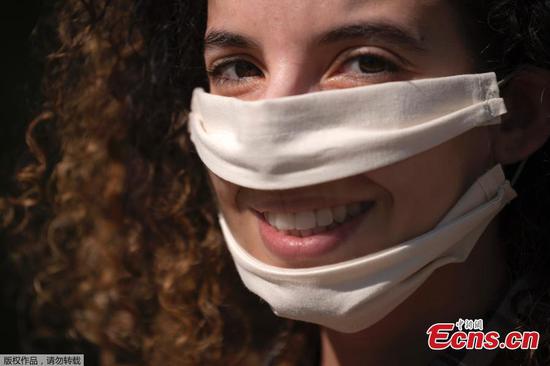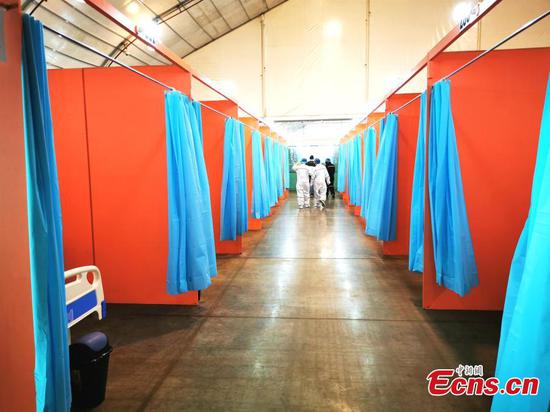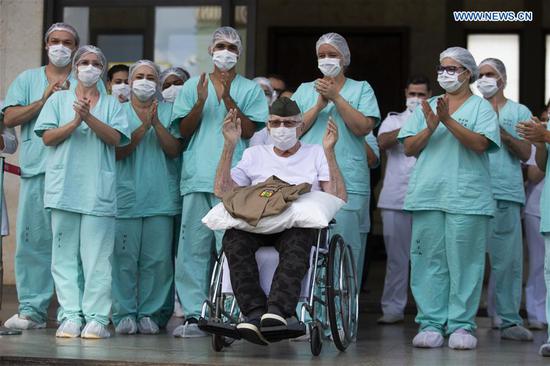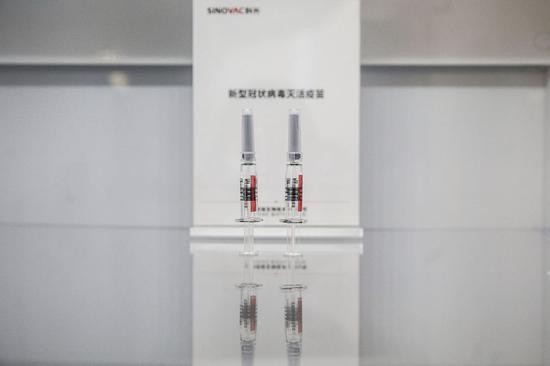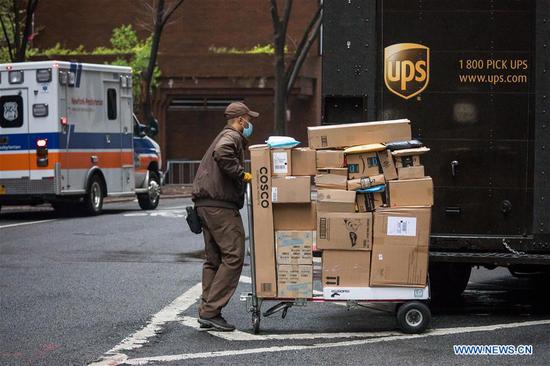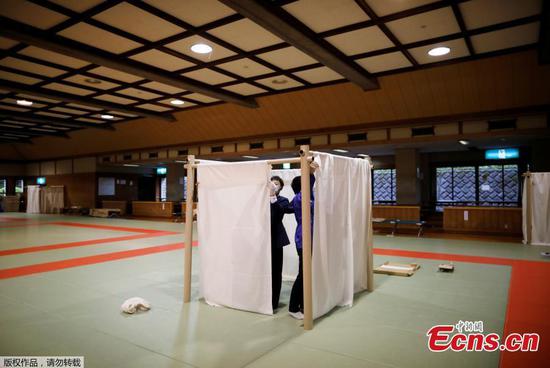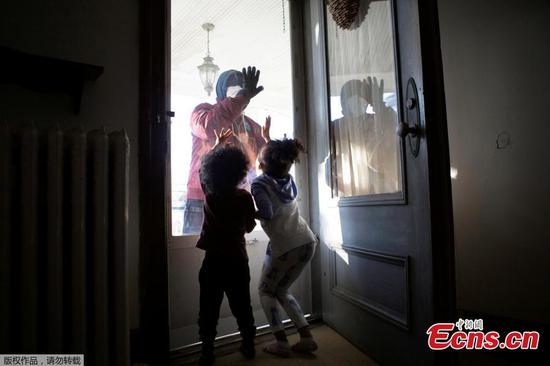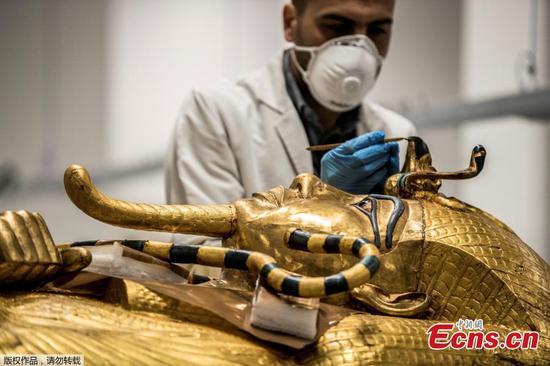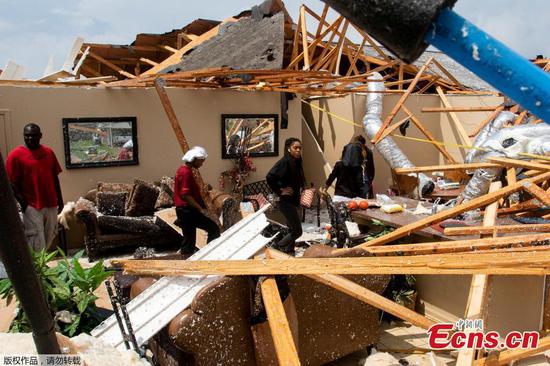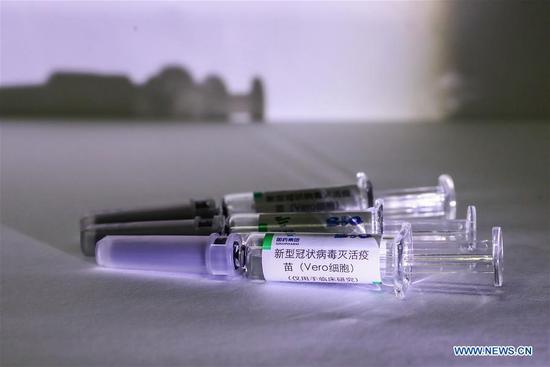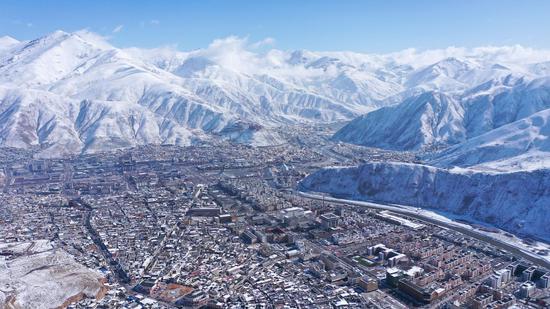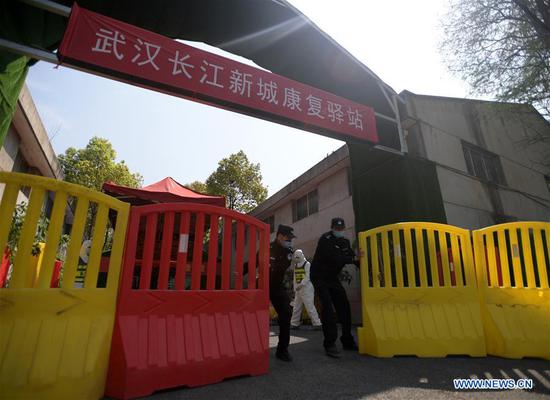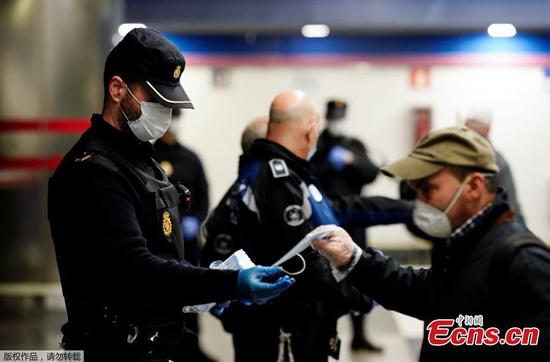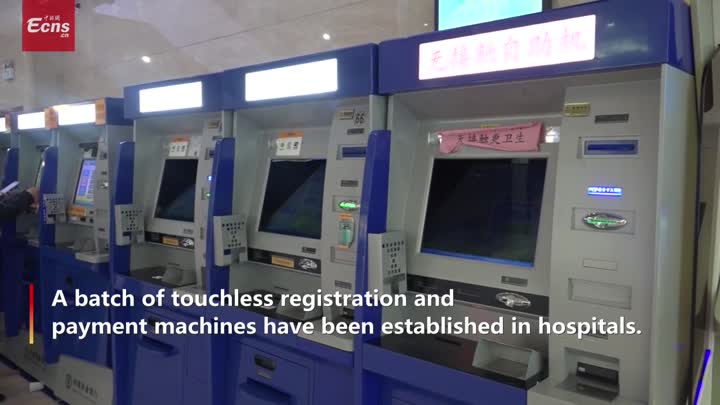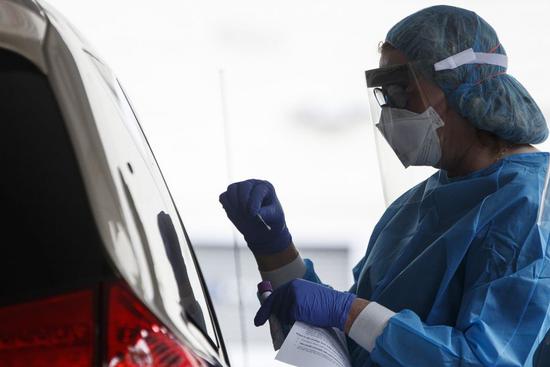
A medical worker at a COVID-19 drive-thru testing site uses a swab to take a sample at the George Washington University Hospital in Washington D.C., the United States, on April 9, 2020. (Photo by Ting Shen/Xinhua)
The United States continues to see a startling number of confirmed COVID-19 cases and deaths, as over 613,000 cases and 26,000 deaths have been reported nationwide by Wednesday noon, according to Johns Hopkins University tally.
The United States topped the world in its confirmed cases and deaths, with 435,000 more cases than Spain, which has the second largest number of confirmed cases around the world.
New York City, one of the hot spots in the country, saw nearly 8,000 deaths in total.
The reasons why the United States has such high COVID-19 infection number have drawn great attention and concern from the public. One of the major reasons is the great amount of testing nationwide, experts noted.
More than 3 million tests have been completed in three weeks in the United States, Dr. Deborah Birx, White House COVID-19 task force director, told a daily press briefing earlier this week.
According to the U.S. Food and Drug Administration, to date, 34 emergency use authorizations have been issued for diagnostic tests. More than 180 laboratories throughout the country have carried out testing.
Robert Schooley, a professor of medicine with the Division of Infectious Diseases and Global Public Health at the University of California, San Diego, told Xinhua the number of cases reported are heavily influenced by how much testing is done in a given location.
"I find following hospitalization rates, ICU rates and death dates to be the most reliable indicators of the course of the epidemic in a given location," he said.
"These lag behind the number of new infections by a week or two, but they are much less sensitive to how much testing has been done. These numbers seem to be peaking in places like New York and we hope they now start dropping rapidly," Schooley said.
Besides wide testing, the startling infection number in the United States is also related to the sensitivity of its advanced testing methods, and the diagnostic criteria for COVID-19 patients, said Zhang Zuofeng, a professor of epidemiology and associate dean for research with the School of Public Health at the University of California, Los Angeles.
Once an individual has tested positive for COVID-19, he or she will be counted into confirmed cases, different from some other countries which also take into consideration results of CT scans, blood tests or other clinical features, Zhang added.
Insufficient sheltering in place and starting it too late also contributed to the high infection and death number in the country, Stanley Perlman, a professor of microbiology and immunology at the University of Iowa, told Xinhua.
U.S. President Donald Trump announced late March that the national social distancing guidelines aimed at slowing the spread of COVID-19 will be extended to April 30. He had originally planned to reopen the country for business by Easter which fell on April 12.
Experts warned lifting containment measures, such as ordering residents to stay home and closing schools and nonessential businesses, may lead to a resurgence of the epidemic this summer.









